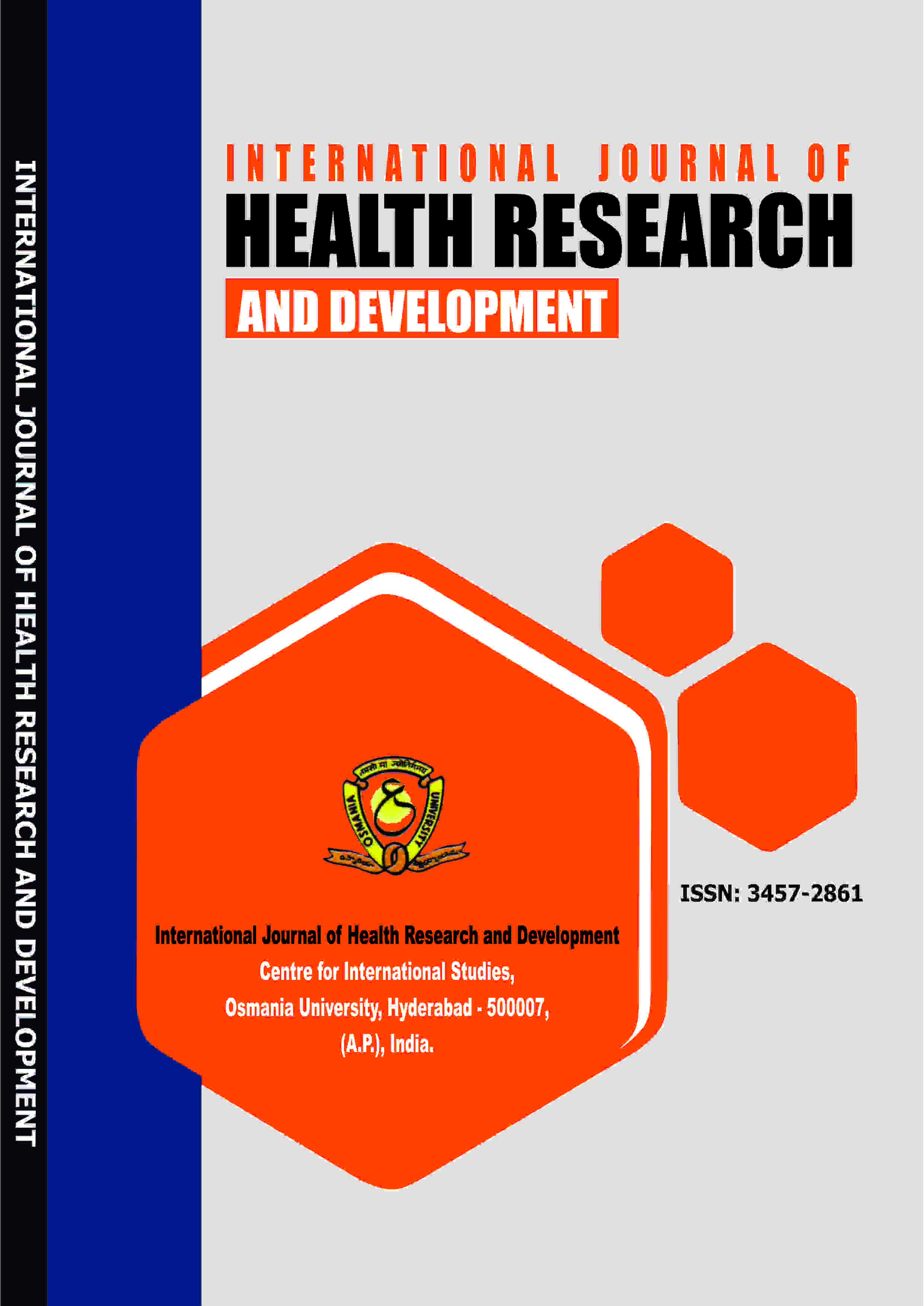INTERNATIONAL JOURNAL OF HEALTH RESEARCH AND DEVELOPMENT (IJHRD)
PHYSICOCHEMICAL DETERMINATION OF ETHYL ACETATE EXTRACT AND NHEXANE EXTRACT OF AZADIRACTHA INDICA A. JUSS LEAVES
E-ISSN: 2601-6400
P-ISSN: 2601-6397
DOI: https://iigdpublishers.com/article/687
Background: Neem (Azadiractha indica A. Juss) as a tropical and subtropical plant has been widely used in traditional medicine since prehistoric times. Several biological activities, such as antibacterial, anti-inflammatory and antioxidant properties, have been demonstrated in Neem extract. Aim: The study aims to research was carried out on the physicochemical properties of neem leaves (Azadirachta indica A. Juss) using ethyl acetate and nhexane as solvents. Methode: In this study, Azadiractha indica A. Juss leaves was extracted using a maceration method with two fluids namely ethyl acetate a n-hexane. The extract based on six parameters from determining physicochemical properties, namely % yield, organoleptic, determination of dissolved compound levels, phytochemical screening, determination of drying Shrinkage and determination of specific weight. Result: The results of this study showed, the yield obtained for each solvent is 6.218% ethyl acetate extract and 0.968 % n-hexane extract. Organoleptic examination (form, colour, smell and flavor) for ethyl acetate extract was thick, blackish green, distinctive smell and bitter, and then n-hexan extract was thick, brownish yellow, odorless and bitter. In the ethyl acetate extract, the levels of compounds dissolved in water and ethanol solvents were 16.84 % ± 0.061 and 68.29 % ± 0.042 respectively. The levels of compounds in the nhexane extract dissolved in water and ethanol were 4.26% ± 0.064 and 23.18% ± 0.049, respectively. The results of the phytochemical screening for ethyl acetate extract of neem leaves are alkaloids and flavonoids. Meanwhile, n-Hexane extract from neem leaves contains alkaloids and terpenoids. The drying loss values obtained from ethyl acetate extract and n-Hexan extract of neem leaves were 4.748% ± 0.257 and 5.219% ± 0.089. Specific gravity obtained from The dilution of ethyl acetate extract and n-hexane extract of neem leaves was 1.0389 g/mL ± 0.039 and 1.0289 g/mL ± 0.038. Conclusion: This study showed that variations in solvents in extraction can affect the physicochemical properties. The extract with ethyl acetate solvent showed better physicochemical properties where the extract obtained in % yield, soluble compound content, phytochemical screening, determination of drying Shrinkage and determination of specific weight was better compared to the extract with n-hexane.
Yuri Pratiwi Utami, Nurzadrina Wahyuddin & Imelda Desi
Sukrasno, (2003). Neem is a multifunctional medicinal plant. Jakarta: Agromedia Pustaka..
A. S. Li’aini, I. P. A. H. Wibawa, and I. N. Lugrayasa, (2021). “Characterization of Antioxidant Activity of Neem Leaf Extract (Azadirachta Indica A. Juss) from Jagaraga Village, Sawan District, Buleleng Regency, Bali,” Bul. Plasma Nutfah, vol. 27, no. 1, p. 51, Sep, doi: 10.21082/blpn.v27n1.2021.p51-56.
Supriyanto, S. Bw, R. M, & Yunianta, (2017). “Phytochemical Test and Antioxidant Activity of Neem Leaf Extract," P R O N GNFKE-4THUN2017.
R. A. Miarsih, (2017). Test of Antioxidant and Antihemolysis Activity of Red Ginger Rhizome Extract (Zingiber Officinale Var. Rubrum). Indonesian education university.
G. Pandey, K. Verma, & M. Singh, (2014). “Evaluation Of Phytochemical, Antibacterial And Free Radical Scavenging Properties Of Azadirachta Indica (Neem) Leaves”. Accessed: Dec. 28, 2023. [Online]. Available: https://www.semanticscholar.org/paper/ EVALUATION-OFPHYTOCHEMICAL%2C-ANTIBACTERIALAND-FREE-PandeyVerma/ae4c50562ee29e0cdb487513ce7 0bce50d71d3d3
